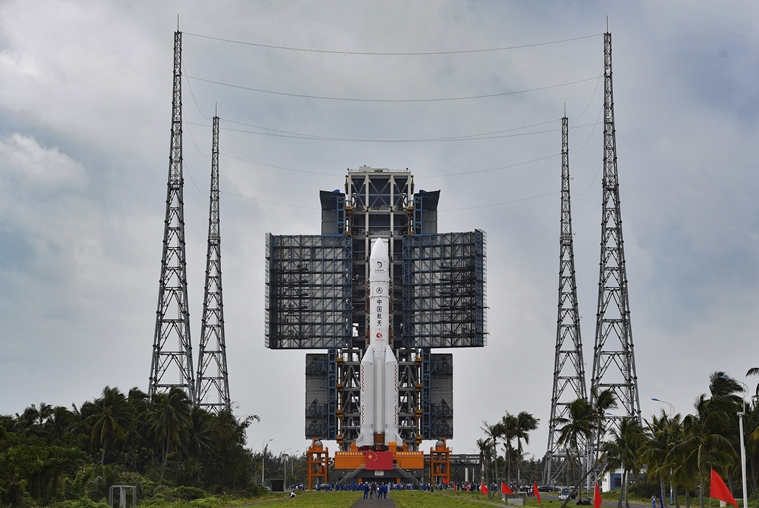Context
- China’s Chang’e-5 Mission will become the first probe in over four decades to bring back samples of lunar rock from a previously unexplored portion of the Moon.
- Early in 2019, China’s Chang’e-4 probe successfully transmitted images from the far side of the Moon, also referred to as the dark side. This was the first probe to land in this portion of the Moon.
What is the Chang’e-5 mission?
- Chang’e-5 lunar mission, which is named after the Chinese Moon goddess who is traditionally accompanied by a white or jade rabbit, is the Chinese National Space Administration’s (CNSA) lunar sample return mission that is set to launch on November 24 from the Wenchang Space Launch Center on Hainan Island in China.

Source: Indian Express - The goal of the mission is to land in the Mons Rumker region of the moon, where it will operate for one lunar day, which is two weeks long and return a 2 kg sample of the lunar rock possibly by digging about 2 metres deep into the surface of the Moon.
- The mission comprises a lunar orbiter, a lander and an ascent probe that will lift the lunar samples back into orbit and return them back to Earth.
- Chang’e-5 mission comprises a robotic arm, a coring drill, a sample chamber and is also equipped with a camera, penetrating radar and a spectrometer.
What do lunar samples tell us?
- The first samples of rocks from the Moon were collected during the Apollo 11 mission. In a document from 1984, NASA noted that lunar samples can help to unravel some important questions in lunar science and astronomy, including the Moon’s age, the formation of the Moon, the similarities and differences between the Earth and the Moon’s geologic features and history and to see if the Moon can give scientists information about the solar system itself.
- For instance, the shape, size, arrangement and composition of individual grains and crystals in a rock can tell scientists about its history, while the radioactive clock can tell them the rock’s age. Further, tiny cracks in rocks can tell them about the radiation history of the Sun in the last 100,000 years.
- As per the Lunar and Planetary Institute, rocks found on the Moon are older than any that have been found on Earth and therefore they are valuable in providing information about the Earth and the Moon’s shared history.
- In 1970, the Soviet Union’s Luna 16 probe returned a sample weighing about 101 grams and taken from the Mare Fecunditatis area of the Moon. This was followed by the Lune 16 probe that returned over 55 grams of soil from the Apollonius highlands region.
Source: Indian Express
For More Such Science and Technology Current Affairs: Click Here
